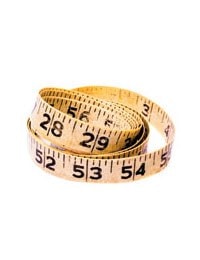
Q: “What are the different techniques available for working out body composition? I’ve heard of a number of different ways, and want to know which is the most accurate and easy to perform.”
Name not suppliedA: Simon Pearson, ISAK Level 3 anthropometrist, comments:
“There are many methods for measuring body composition, some more accurate than others, but the most common are BMI (body mass index), waist and hip girths, skin-fold measures, and BIA (bioelectrical impedance).
BMI is the easiest test of body composition or relative ‘fatness’ of an individual as it requires only height and weight (BMI = weight (kg)/height(m)2). BMI has some major limitations, including that it does not distinguish muscle from fat. For example, using a standard BMI scale (>25 = overweight; >30 = obese), all of the current All Blacks would be regarded as either overweight or obese.
Waist and hip girths are also used by many health professionals to give an indication of the risk of obesity-related disease due to the raised risk of carrying excess body fat in your central region (apple shaped).
In comparison, skin-folds and BIA are both more accurate for assessing body composition. Skin-folds (done with calipers) are a more robust measure, but the skin-folds must be taken by someone who is properly trained in order to assure accuracy. BIA is less invasive and fairly simple to perform as it involves only a small electrical current passing through your body (this is what the body fat scales use in some gyms), but it is sensitive to how much water you have consumed.”
www.healthyfood.com










